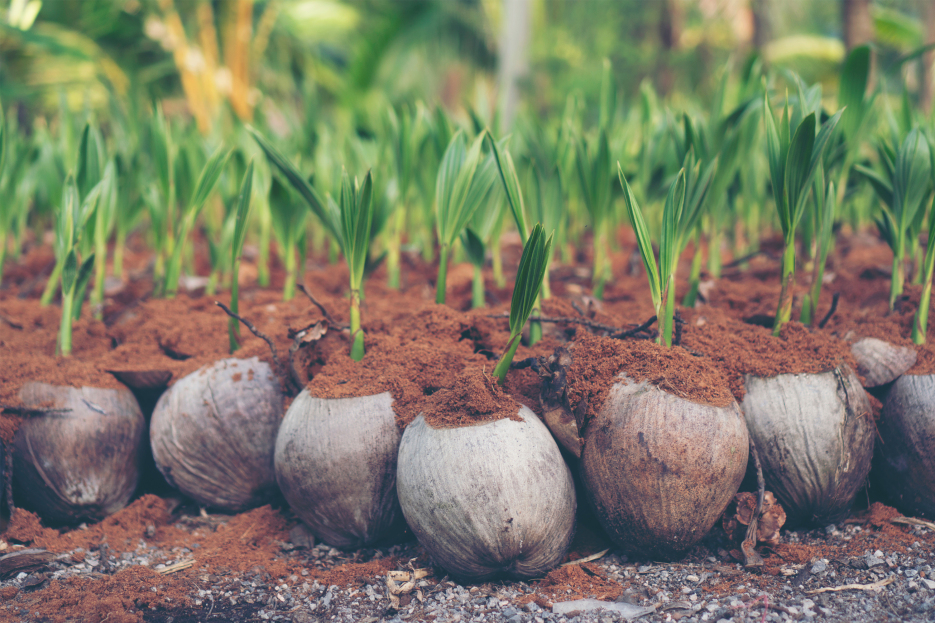
Cocos nucifera, commonly known as the Coconut Palm, is a tropical beauty that brings a touch of the beach into your home. While often grown outdoors in warm climates, this plant can be kept indoors with proper care. Its long, arching fronds create a lush, tropical vibe, making it a stunning addition to any space. However, keeping a Coconut Palm thriving indoors requires attention to light, humidity, and watering. Here’s a guide to help your Cocos nucifera flourish as a houseplant.
Coconut Palms need bright, direct sunlight to thrive. Ideally, place your plant near a south-facing window where it can receive at least 6–8 hours of sunlight daily. If natural light is limited, consider supplementing with a grow light to maintain healthy growth. Without enough light, the leaves may turn yellow, and the plant may become weak and leggy.
Cocos nucifera prefers consistent moisture but does not like sitting in water. Water when the top 1–2 inches of soil feel dry, ensuring that excess water drains freely. Use filtered or rainwater at room temperature to avoid chemical buildup from tap water. Reduce watering slightly in winter when the plant’s growth slows down.
Being a tropical plant, the Coconut Palm thrives in high humidity (60% or higher). If your home has dry air, increase humidity by:
The ideal temperature range is 70–90°F (21–32°C). Keep the plant away from cold drafts, air conditioning vents, and sudden temperature changes, as it is sensitive to cooler conditions.
A well-draining, sandy soil mix is best for Cocos nucifera. A mix of potting soil, sand, perlite, and peat moss helps retain moisture while ensuring proper drainage. Always use a large pot with drainage holes to prevent root rot.
Feed your Coconut Palm with a balanced liquid fertilizer every 4–6 weeks during the growing season (spring and summer). Use a fertilizer with high potassium and magnesium levels, as these nutrients are essential for palm health. In fall and winter, reduce fertilization to allow the plant to rest.
Regular maintenance helps keep your Coconut Palm healthy:
Cocos nucifera is grown from coconut seeds, but germination is a slow and challenging process that requires high humidity, warmth, and patience. If you’re growing from a coconut, partially submerge it in moist soil, ensuring warmth and humidity levels remain high. However, most houseplants are purchased as young seedlings.
Yes! The Coconut Palm is non-toxic to pets, making it a safe choice for households with cats and dogs. However, ensure they don’t chew on the fronds, as the leaves can cause mild digestive discomfort if ingested in large amounts.
Caring for a Cocos nucifera as a houseplant requires dedication, but the reward is a stunning, tropical addition to your indoor space. By providing plenty of sunlight, regular watering, high humidity, and proper nutrients, you can enjoy the beauty of a Coconut Palm year-round. With the right conditions, your indoor Coconut Palm will thrive and transport you to a tropical paradise!